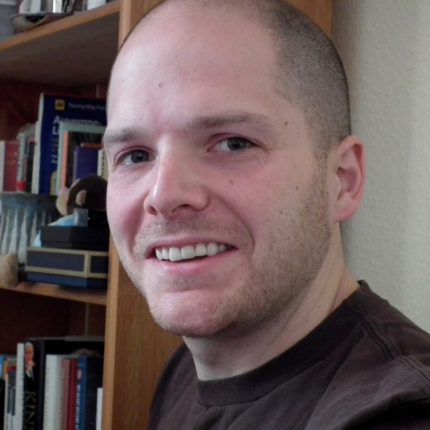As the application deadline for undergraduate admission to the universities of Oxford and Cambridge approaches this Monday, the three authors of the recent book Who are universities for? explain how all universities – not just the most selective – must overhaul their admissions systems if they are to become truly inclusive places to learn.
Some come from five years in the army; some from thirty years of work in social care; some from a period of addiction; some missed much of high school because of a serious illness, or because they had to care for a parent or a child; some are refugees whose education was disrupted in their country of birth; some were told university wasn’t for them, and some believed it because they didn’t know anyone else who’d gone.
But every year, around thirty students join the University of Bristol’s Foundation in Arts and Humanities. It’s a one-year programme that requires no formal qualifications; and, for those who complete the course satisfactorily, it leads to a guaranteed place on an undergraduate degree in arts and humanities. Many progress to a degree, and of those nearly all graduate and with strong results. But almost none would be admitted to a university degree through any of the standard routes. And similar programmes run in Sheffield, Durham, Liverpool, Leeds, Birkbeck and the Open University.
We talk often as though issues of participation can be solved by changing which students with A level qualifications go on to university, or to particular universities. Yet this ignores the vast number of those who leave education without the qualifications currently required to study in higher education. The example of foundation years and Access courses around the country suggests that many people who could benefit are thus missing out.
What does this show? On its own, not very much. Yes, nearly all universities base their admissions criteria on prior qualifications. But even the staunchest defender of current university admissions systems will admit that it does not work perfectly: it offers places to some students who struggle with the intellectual content of the degrees they pursue, and it excludes some who would thrive in a university environment. Statisticians call these Type 1 and Type 2 errors, respectively. The first are false positives — where a test admits a person who shouldn’t have been admitted. The second are false negatives — where a test rejects a person who should have been admitted. Our question is: how we might reduce the false negatives in our university admissions systems? We offer two proposals, the second more radical than the first.
Our first proposal: interviews and contextual offers
On the foundation year course we designed and run, we prioritise people who don’t have the prior qualifications required to gain a place at university through the standard routes. We decide whom to admit on the basis of a 30-minute interview and a piece of writing that we ask applicants to complete beforehand. Our hope in a wider system would be to admit many more people without prior qualifications. But, there is an important sense that initiatives of this kind are effective because they are relatively small scale. The main challenge in “scaling up” is the amount of work involved. One way to reduce the workload would be to use a hybrid admissions system. Where it is possible to extract the information we need from formal qualifications, we do so and in the fairest way possible using “contextualised offers”. Where that information is absent or too unreliable, we propose interviews.
How do “contextualised offers” work? Prior results are currently used as an indicator of what is often called a student’s “academic potential”. In the current system, when contextualised offers are made, they are often justified by pointing to empirical evidence that demonstrates that A level results on their own do not predict a student’s final academic grade on their degree result as reliably as A level results paired with certain other facts about a candidate — the sort of school they attended or parental income, for instance. Students with the same A level results are more likely to achieve a first-class degree if they attended a state school than if they attended an independent school, so those state school students deemed likely to benefit receive a lower “contextual” offer.
But we might reframe such offers as follows. First, find the category of state schools whose students typically achieve the average (median) A level results across all schools in the country, state and independent. Next, find the grades that ensure that a student coming from one of those schools with those grades has a 75% chance of achieving a first-class or an upper second-class degree. Suppose they are BBC. Then your standard offer is BBC, and your contextual offer to students from another category of school is whatever grades are required from that school to ensure a 75% chance of achieving a first class or upper second-class degree.
By doing this, we stop casting independent schools as the norm – which, statistically, they are not, teaching only 7% of all pupils in the UK and 18% of all pupils over 16. We cast the average schools as the norm, and we cast the independent school students as having had an advantage over the norm. Note the parallels, for instance, between this and the recent drive to recast the disparity between treatment of men and women as male privilege, and the disparity between the treatment of White and people of colour as White privilege. A “contextual” offer would thus become a higher offer for those who have received a privileged start in how they achieved their results.
The broader problem lies in the goal that we set for an admissions procedure. The goal, we argue, should not be potential to succeed, as currently, but the potential to grow.
Once this shift in priorities has been made it is much easier to make the case for admitting those without qualifications at all. After all, there will still be some whom contextualised offers will not help. Among those applying to the foundation year, 90% had no A levels at all and others had gained the results they did have under such idiosyncratic conditions that those results would be a poor predictor of their abilities. How can universities take more students in such a position? One option for these applicants would be interviewed. Since we can use “contextual offers” for some students, the numbers will be smaller and interviews thus more manageable.
Another option would be written work. When we were selecting students for the foundation year, we drew on personal statements from the candidates, 30-minute interviews, references from someone who could speak for them, and a three- or four-page piece of written work that we set in advance. The latter allows us to see how a person’s mind works when it has greater time and space to ponder a question. Interviews give something complementary. They allow a two-way exchange; letting us probe parts of the written work that are unclear, or where it seems that a deeper insight has been left unspoken or unexplored.
Think of Jake and Abbi.
Jake is 19 and he’s applying to university with three A levels at grade B. There were few bumps in the road as Jake worked through high school. His parents are present and they’re supportive; he didn’t get ill or suffer a bereavement, and attended a state school with a very middle-class intake; Jake is white, straight, and a cisgender man — he hasn’t had to come out about his gender or his sexuality at high school; he’s never had to cope with the drip-drip of casual homophobia, nor been abused because of his ethnicity, nor been side-lined in a physics class because he’s a woman.
Abbi’s 49. She left school at 18 with one A level at grade C, and a mixed bag of GCSEs, having spent her final school years in and out of hospital with anorexia; she tried to return to study for A levels at college when she had recovered, but she was socially isolated, short of money, and needed to work; in her mid-twenties she had two sons, who have been promising to leave home for four years, but never seem to manage it. Abbi is a Black British woman, her school sent very few pupils to university, and she will be the first from her family to go.
Jake gets a high upper-second for his degree, averaging 68, putting him in the top fifth of students at his university, while Abbi graduates accumulated marks as high as 75 and as low as 45 and graduates with a high lower second, averaging 58, meaning that three out of five of her classmates will graduate with higher grades. With little background knowledge of universities and the way they work, Abbi found it difficult to navigate the institution, while Jake found it easy; she was reluctant to ask for help, while Jake was not.
If our goal is to maximize the degree classification that our students, on average, achieve, Jake is a better bet than Abbi. We know that Black British students perform less well in final university exams than their white classmates who entered with the same A level results and from the same educational backgrounds. The challenges that arise from being Black in an educational setting that is almost exclusively white are significant. Having children also has an impact — their demands on your time don’t let up just because you’ve enrolled at a university. And being an older student surrounded by classmates in their late teens — that takes its toll as well. So, in a sense, Abbi’s final results were reasonably predictable from the outset, and a university set on maximizing those final results (which league tables encourage) would have thought her a bad bet.
“Value-added” is a term that seems to have migrated from the business world into the jargon of education management. It is often still used to refer to the economic or monetary value that was its original meaning. But, there is a distinctive sort of value that education can add to a person’s life — it isn’t reducible to their employability or earning power or contribution to the national economy, but it’s really all the same. And, if we read “value” in that way, the term “value added” does capture what universities should aim to provide. We should aim to admit students for whom the most of this value can be added. Abbi’s journey, for instance, covered far more ground than Jake’s; her university experience added more.
The examples we’ve chosen here are inevitably somewhat crude. After all, many students in Abbi’s position go on to do extremely well. 9 out of every 10 of the Bristol Foundation students who have graduated have done so with a First or 2.i, and many of them have faced multiple barriers to accessing higher education. This only goes to underline that the “value added” works both ways: universities gain students capable of adding to their subjects through the experience they bring with them.
Our second proposal: open access
We now turn to our second, more radical, proposed admissions model. The Open University, as well as the non-selective French université system that is currently under threat, both offer one way of managing admission: entirely open access — that is, anyone can enrol, for free, regardless of prior qualifications.
Is such a system feasible? One concern is oversubscription. How should we control the demand for places on courses, particularly for some of the most popular courses at some of the most prestigious institutions? There are broadly two styles of response: the first is followed in the French system; the second is the Open University’s strategy, features of which were also adopted by the former extramural departments in UK universities. We propose a hybrid of the two.
The French system is a central planning system. Each year, would-be students submit an ordering of the courses they’d like to pursue together with the universities at which they’d like to study them. Places on these courses are then allocated centrally by the French government with an eye to giving as many students as possible places on the courses that they ranked highly. When a course is oversubscribed, however, without any recourse to the students’ prior results, the system chooses almost at random, giving some weighting to those who wish to attend their local university.
The Open University manages demand differently. Instead of a central planning model, it is a market-based model — as demand increases, the institution supplies more. It can do this partly because it does not have a physical campus, so that increasing its numbers doesn’t place a strain on lecture theatre space and decreasing them doesn’t leave rooms empty in the same way (although reductions in student numbers since 2010 have had a profound impact on the OU’s resources in other ways). Also, much of its teaching is carried out remotely by tutors on a flexible contract. Furthermore, it makes use of distance-learning methods, such as online teaching.
Nearly all universities in the UK have physical campuses, and some are in high demand, either because of the prestige of studying there or because the city in which they are based is attractive. Also, while the flexibility offered by teaching contracts at the Open University works well while that is a single institution among others with a more traditional structure, there are already worries about the casualisation of teaching labour in higher education, and we would not want this to become a structural feature across the sector.
However, there are equal problems with a model that relies entirely on central planning. In the French system, a student whose passion is psychology, and who has a natural aptitude for the subject, might end up assigned to a degree in physics. So, while we propose borrowing from the French system and using a lottery when demand is too high, with a weighting in favour of those who wish to study locally, we would also borrow from the Open University a blended model of study that combines in-person and online learning and assessment. By doing this, we could expand a university’s capacity to teach much larger numbers of students. This is already happening to an extent as shown by the strong growth in the number of students around the world receiving a transnational education (TNE) from UK institutions. We would also borrow from the OU the premise of offering bite-size education first, with an emphasis on open access to the first 60 credits of study (or half of a first year).
False negatives are the people our admissions system fails; the people wrongly excluded from higher education, not because they would not be able to cope with it, nor because they wouldn’t benefit from it, but because the admissions system is not designed to include them. They are the people we met on the foundation year — countless people who would have been false negatives but for that course. When you raise concerns with our current admissions system — when you raise the spectre of these hundreds and thousands of false negatives — its defenders are wont to point out that you can only guarantee that there will be no false negatives in a system if you admit everyone. It is precisely such a system that we have ended up proposing: our goal would be full participation in further and higher education, albeit in a system made more flexible, so people can study at a time and in a mode to suit them, at many different times of their lives.















Getting work that provides a decent living is an essential driver of self-worth. It is the foundation on which social participation is built. We need to keep in mind “education for what”. Getting a 2:1 is not an end in ifself. A question equally important to that in the title of this article is the extent to which University education actually builds real, lifetime work skills
[…] this area interests you, I highly recommend this WonkHE piece on making university admissions truly inclusive – including two very viable recommendations. […]